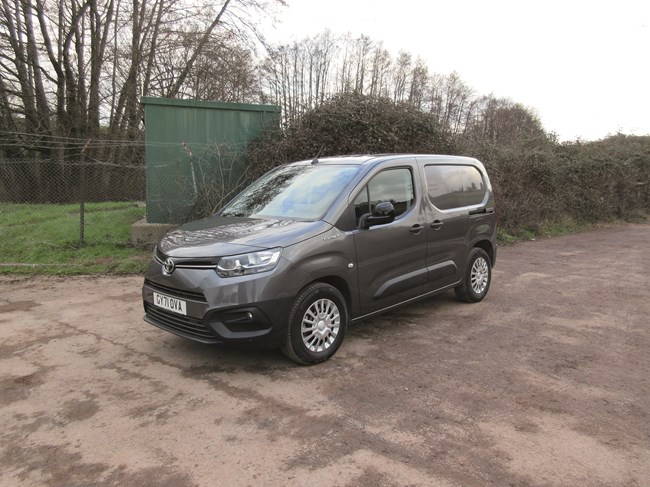- Tyres: The path of least resistance
- ETRUX receives Ford Pro Convertor status
- The Logistics Organisation adds to van fleet with Vanaways
- Northgate launches micromobility service
- Progress being made on shared EV charging, AFP reports
- Medisort electrifying van fleet with Bedeo
- ADVERTISEMENT FEATURE: Taking a shortcut to reduce commercial vehicle emissions
- The What Van? Road Test: Ford Ranger Raptor
- Speakers announced for Commercial Vehicle Show
- Check new vehicle registration details are correct, AFP tells fleets
The What Van? Road Test: Toyota Proace City Electric (2021)
Date: Monday, April 11, 2022

Badge engineering is nothing new. The Pininfarina-designed Morris Oxfords and Austin Cambridges of the late ‘50s and ‘60s wore different logos, but were essentially the same car made by the same manufacturer: BMC.
So it is with today’s Citroen Berlingo, Peugeot Partner, and Vauxhall Combo. While they may have different styling quirks, they are all fundamentally the same van, and all produced by the same global automotive giant: Stellantis. In a sign of the times, all three of them are available with electric power trains as well as internal combustion engines.
Thanks to a joint-venture agreement with Stellantis, Toyota markets an identical model as the Proace City, and we have been taking a look at the electric version. The four battery-powered vans shared the What Van? Electric Van of the Year Award for 2022.
Proace City Electric boasts a motor delivering up to 100kW powered by a 50kWh lithium-ion battery that sits under the cargo bed. Range between recharges is up to 168 miles according to the worldwide harmonised light vehicle test procedure (WLTP).
All City Electrics come in icon trim, and customers can opt for either the L1 (2,785mm wheelbase) or the longer L2 (2,975mm wheelbase). The former offers a 3.3m3 cargo area and an 800kg payload capability while the latter offers 3.9m3 and 750kg respectively.
It is worth noting that payload capacities are in line with those delivered by conventionally-powered models in both cases.
More and more electric vans are permitted to tow trailers these days by their manufacturers, and City Electric can haul one grossing at up to 750kg.
We chose the L1; and we were not disappointed by it.
View The WhatVan Digital Edition


